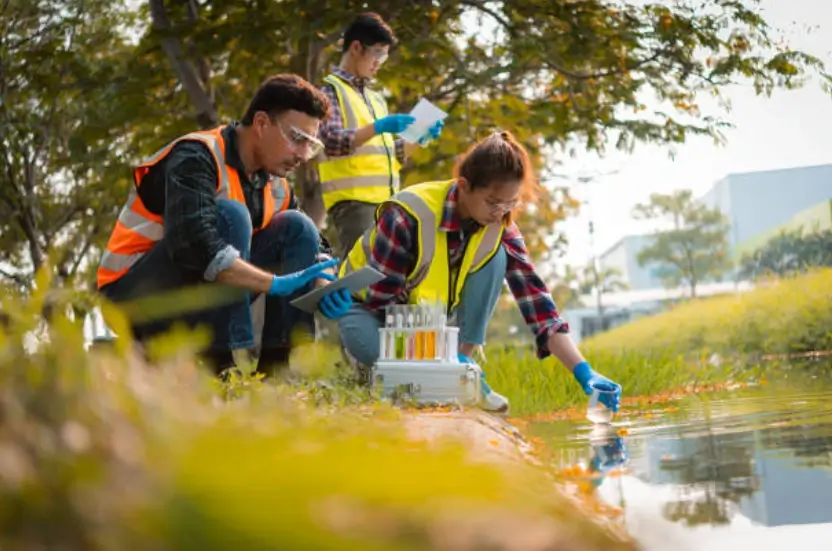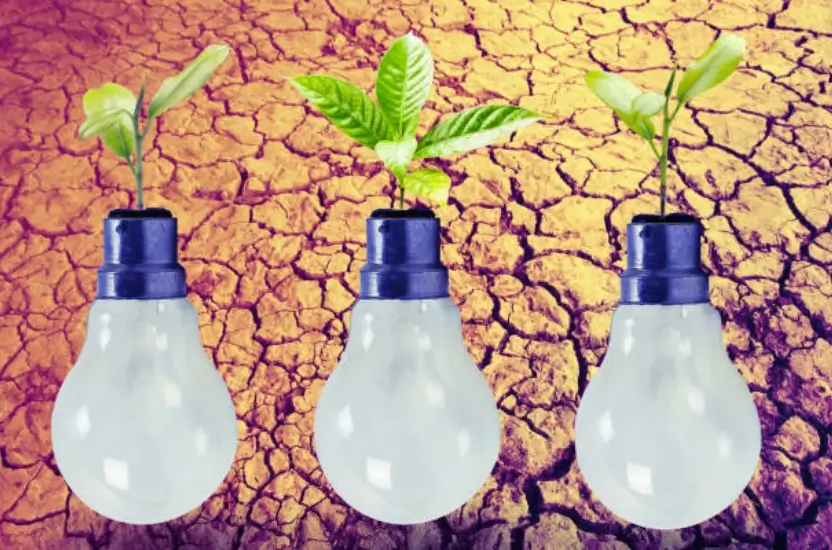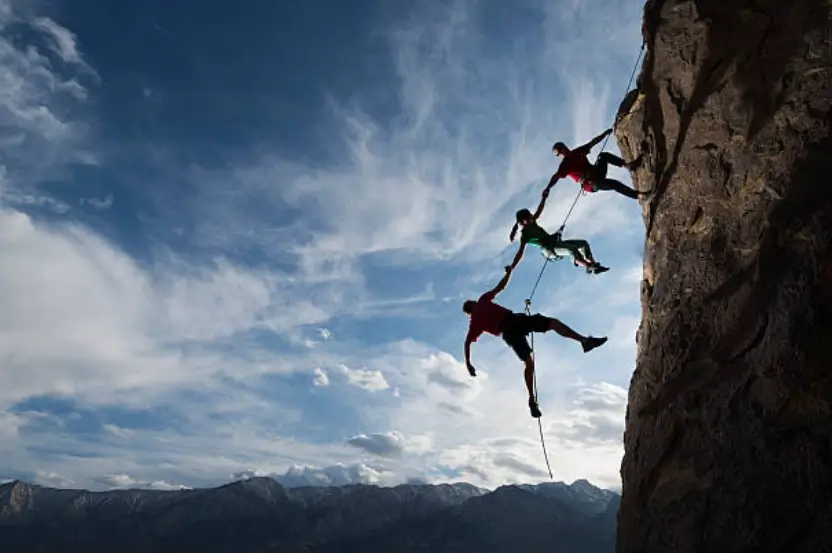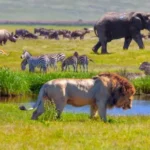What is Climate Change? Climate change is the long-term alteration in the Earth’s temperature and climate, more specifically, a long-term change in the climate. Climate change is natural to some extent and may be driven by factors such as volcanic activity and sunspot cycles; however, man-made factors, including the burning of fossil fuels, have exacerbated the issue over the last hundred years.
There are gases like carbon dioxide and methane that cause heat-trapping to take place in the atmosphere, which has resulted in increased temperatures globally. This process affects the balance of ecosystems, endangers animal life, and presents a considerable risk to human populations. This is because the consequences that come with negligence will reach a stage where they cannot be undone, putting future generations in this position.
Causes of Climate Change?
Some of the leading sources of climate change include the increased use of fossil fuels, negative impacts on vegetation cover, and many industries. Burning coal, oil, and gas caused emissions of carbon dioxide, which enhances the effects of the greenhouse by making the world hotter. Logging primarily decreases the ability of the Earth to absorb CO2 in a bid to reduce the Greenhouse effect.
Also, emissions from industrial processes, transport, and agriculture release the methane and nitrous oxide gases that cause an increase in the global warming effect. We should start trying to stop the causes, hence making the transition to renewable energy and sustainable processes.
Impact of Climate Change on the Environment

Rising Global Temperatures:
Due to climate change, Global warming is one of the most alarming consequences now a days . The global mean temperature has risen by 0.66 degrees Celsius over the previous one hundred years. This event causes erratic climate patterns and specifically influences long-term dry spells and frequent fires.
High temperatures also affect marine life in other ways, such as through alteration of phosphates and CO2, which affects coral reefs and fish. In the event that the warming cycle intensifies, ecosystems are likely to be completely destroy, with further consequences in so many ways on the lives of people and other forms of life.
Extreme Weather Events:
Climate change has altered the occurrence of extreme weather events heralded by changes in climatic patterns. Experiences of hurricanes, heatwaves, fires, and intense rainfall have become frequent and continue to hurt residents, their property, infrastructure, and agricultural produce.
These disasters are associated with the loss of many lives, shelter, and household property, as well as loss of income. Developing countries are the most affected because they reside in continental areas that receive weak infrastructure and have a hard time recovering from such occurrences. The extreme weather conditions can be alleviated by the reduction of the emission of greenhouse gases.
Melting Ice Caps and Rising Sea Levels:
The Arctic sea ice and glaciers are melting at a very high rate because of the increase in temperature of the world climate. It leads to increased sea levels, presenting a great danger to coastal regions and small island states.
Miami, Jakarta, and Venice are some of the affected places experiencing coastal erosion and flooding. Another effect of global warming is that the ice melts, which further affects the earth’s marine life that depends on the ice.
How climate change has been affecting human life?
Health Risks and Diseases:
Global warming can affect human beings in many ways, and the effects can be physical as well as psychological. It is a well-known fact that global warming increases the incidence of vector-borne diseases like malaria and dengue fever. Pollution of the air due to industrial actions causes many respiratory diseases among children.
They also prejudice people to whatever conditions that come with heat strokes and dehydration, thereby enhancing mortality figures. It’s crucial to admit that the climate change problem acts as the root cause of numerous diseases that put people’s health at risk; thus, it’s high time to work on this to create a safer future.
Food and Water Scarcity:
Human beings, particularly the farmers, suffer from changes in weather patterns in as much as it affects agricultural activities as well as water sources. Droughts, floods, and changes in rain patterns affect crop production and availability, thus increasing the prices of food.
It causes droughts and shortages of water for consumption, which has affected the majority of regions globally. It hurts the social and economic welfare of households, particularly among the susceptible groups,
and worsens malnutrition and hunger levels. The above challenges can thus manage through sustainable farming practices and effective management of water resources.
Economic and Social Consequences:
The consequences of climate change are profound, defined as being economic in that there are impacts present in industries, jobs, and the stability of the economy. It results in financial losses in agriculture, fishing, and tourism, as well as insecurity of job opportunities. In this aspect, climate change is socially unjust because vulnerable groups are unable to afford change.
Climate migration is also on the rise, such that millions are displaced due to climate change by forcing to force them to leave their homes due to weather conditions. Climate change mitigation is not only the concern of environmental conservation agencies but also a social and economic challenge.
Efforts to Combat Climate Change

Renewable Energy Solutions:
Conservation of solar, wind, hydroelectric energy, and other renewable sources of energy can significantly cut down carbon emissions. In a bid to reduce the use of fossil fuel, governments and businesses have stakes in clean energy technology.
Renewable sources of electricity, such as solar power systems for homes and wind power generators, offer an opportunity to deal with the ever-rising electricity bill. The proposed plan suggests there is an increased use of renewable energy, which can, in turn, reduce greenhouse gas emissions and promote environmental conservation.
Sustainable Agriculture and Land Use:
Sustainable farming is indeed better for the environment; this may include crop rotation, use of organic farming, and reduced use of pesticides, among others. The afforestation process also contributes greatly to capturing CO2 and bringing the ecological systems back in order.
Conservation agriculture practices entail the proper use of the land in producing crops in order to maintain soil fertility and productivity while at the same time continuing with farming without negatively affecting the environment.
Global Policies and Agreements:
Thus, the global temperature must not rise by more than 2 degrees Celsius, and a more ambitious target of 1.5 degrees Celsius is set by the Paris Agreement. Governments are pledging to cut greenhouse gas emissions, putting their capital into green technologies, and enforcing even higher norms for pollutants. As it has been demonstrated, some of these nations have come a long way in their attempt, but collective efforts must be made to make the change.
What You Can Do to Help?

Reducing Carbon Footprint:
It is possible to suggest that every person make some changes and adjustments to minimize their carbon footprint. Some strategies to reduce emissions include taking public means of transport, carpooling, using energy-efficient appliances, products, and equipment.
Other actions include decreasing our waste production, recycling, and certainly, saving water. It means that people should make correct decisions in everyday circumstances, and as a result, everyone will create a positive change in the environment.
The Future of Our Planet
Predictions for Climate Change:
In the course of strengthening global climate change, natural disasters, loss of biological diversity, and the depletion of resources will increase. According to scientists, if there are no positive decisions and actions, the temperature on the Earth will increase by 3–4 degrees by the end of the century.
This may lead to some geographical and climatic areas becoming uninhabitable and lead to competition for resources. This is why there is an urgent need to mobilise action to help avert the potential calamities that may befall us shortly.
The Role of Governments and Communities:
There is therefore a need on the part of governments to put in place and strictly observe infrastructures that will curb emissions and accord environmental cover. In many cases, communities are very influential in the support of sustainability at the grassroots level. Collectively, the policymakers, the businesses and themselves can work together and ensure that the society is preserved for generations to come.
Conclusion:
Climate change is a complex problem that is considered to be one of the major concerns in the modern world. Knowing the causes, risks, and opportunities is crucial to being able to address them appropriately.
Governments, corporations, and citizens must change their behaviors, practices and adopt renewable energies and environmental policies to fight climate change.
FAQ’s:
Q: What can one do to reduce climate change?
A: Some of these include the promotion of an environmentally friendly means through the reduction of carbon emissions, encouragement of green business practices, and familiarizing people with the issue.
Q: Why Renewable energy is very important for several reasons?
A: Renewable energy also helps in reducing the consumption of fossil-based energy products, lowers emissions of greenhouse gases, and supports sustainable development.
Q: The greatest risks arising from climate change include?
A: Misfortunes include increased temperatures, natural disasters, food and water shortages, and an unstable economy.



